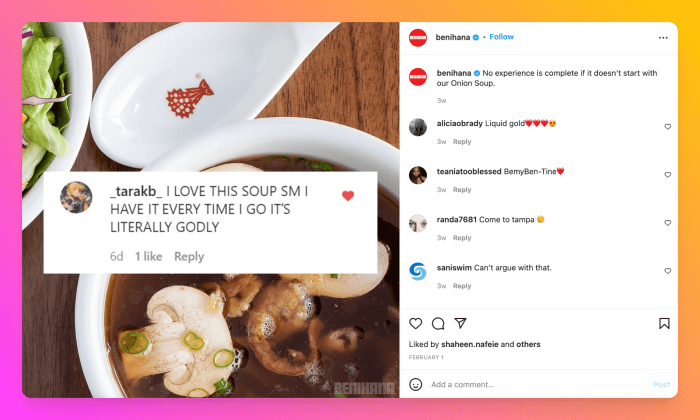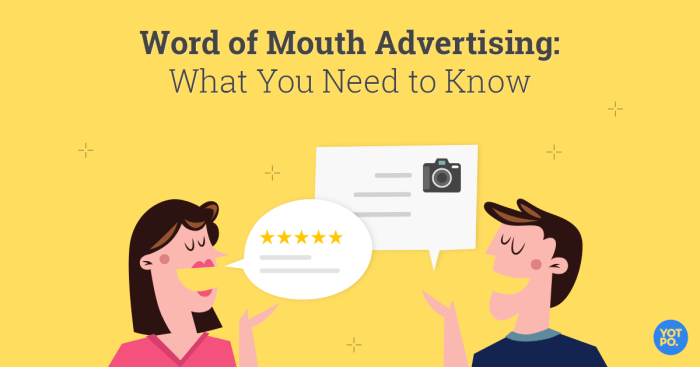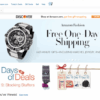Word of mouth marketing strategy is the art of leveraging satisfied customers to spread the word about your brand. It’s a powerful, often underestimated, approach that relies on genuine recommendations and positive experiences. This strategy, whether organic or amplified, can significantly impact your brand’s reputation and sales. We’ll explore how to define, build, and leverage WOMM to achieve remarkable results, from understanding your audience to measuring success.
This guide dives deep into the world of word-of-mouth marketing, covering everything from crafting compelling strategies to utilizing technology for maximum impact. We’ll analyze successful campaigns, dissect the key elements, and equip you with the knowledge to implement effective WOMM strategies that drive growth and brand loyalty.
Defining Word-of-Mouth Marketing
Word-of-mouth marketing (WOMM) is a powerful and often underestimated strategy for businesses. It leverages the influence of satisfied customers to spread positive messages about a product or service, generating authentic engagement and trust. Unlike traditional advertising, WOMM relies on organic recommendations and genuine experiences, building a stronger connection with potential customers. It’s a cost-effective approach that can yield substantial returns when executed effectively.WOMM distinguishes itself from other marketing approaches by its reliance on interpersonal communication and recommendations.
Traditional advertising campaigns often aim for broad reach, but WOMM focuses on building relationships and fostering trust through genuine endorsements. This authenticity creates a stronger emotional connection, leading to increased customer loyalty and brand advocacy.
Word-of-Mouth Marketing Types
Word-of-mouth marketing comes in various forms. Understanding the different types of WOMM is crucial for developing effective strategies. Organic WOMM arises naturally from satisfied customers sharing their positive experiences, while amplified WOMM leverages marketing efforts to enhance the spread of positive word-of-mouth. Both forms play a vital role in building a strong brand reputation.
Organic vs. Amplified WOMM
A comparison of organic and amplified WOMM strategies highlights their key differences:
| Feature | Organic WOMM | Amplified WOMM |
|---|---|---|
| Source | Satisfied customers sharing their experiences naturally | Influencers, campaigns, and other marketing efforts |
| Control | Limited control over the message and reach | High level of control over the message and reach |
| Cost | Low, primarily relying on customer satisfaction | Medium to high, requiring investment in campaigns and influencers |
| Reach | Limited, confined to the customer’s network | Broad, potentially reaching a wider audience |
Organic WOMM thrives on customer satisfaction. When a customer genuinely enjoys a product or service, they are more likely to recommend it to others. This natural sharing fosters trust and credibility, making organic WOMM a valuable asset for any business. Amplified WOMM, on the other hand, actively promotes positive word-of-mouth through targeted marketing campaigns. Employing influencers, running contests, or creating social media campaigns can significantly expand the reach of positive messages.
Building a Strategy
Word-of-mouth marketing (WOMM) relies heavily on building a strong strategy. It’s not just about hoping people talk about your brand; it’s about actively fostering conversations and encouraging genuine recommendations. A well-defined strategy ensures your efforts are focused and measurable, maximizing the impact of positive word-of-mouth. This involves understanding your target audience, identifying key influencers, and establishing a system for tracking the effectiveness of your campaigns.A successful WOMM strategy requires a clear understanding of your target audience.
Their needs, desires, and pain points are the foundation upon which you build your message and choose your advocates. Knowing your audience enables you to tailor your approach, ensuring your message resonates authentically and encourages genuine recommendations.
Understanding Your Target Audience
Understanding your target audience is crucial for WOMM success. It involves more than just demographics. You need to delve into their values, interests, motivations, and online behavior. What are their aspirations? What are their frustrations?
What kind of content do they engage with? This deep understanding allows you to craft messages that genuinely connect with them, making your brand relatable and trustworthy.
Identifying Potential Advocates
Identifying potential advocates within your target audience is a critical step in building a successful WOMM strategy. These aren’t just any customers; they’re individuals who are passionate about your brand and are likely to spread positive word-of-mouth. These advocates are often early adopters, enthusiastic reviewers, and active members of online communities relevant to your industry.Methods for identifying potential advocates include analyzing customer data, social listening, and online surveys.
Customer relationship management (CRM) systems can help you identify customers who have consistently expressed enthusiasm for your products or services. Social media monitoring tools allow you to track conversations about your brand and identify key influencers. Surveys can help you understand customer preferences and identify potential advocates who share your brand’s values.
Measuring the Effectiveness of WOMM Initiatives
Measuring the effectiveness of your WOMM initiatives is essential for continuous improvement and optimization. A clear framework for tracking and analyzing key metrics is necessary. This allows you to assess the success of your campaigns and identify areas for improvement. Effective measurement is not just about counting social media mentions; it’s about quantifying the impact of those mentions on brand awareness, customer acquisition, and sales.A robust framework for measuring WOMM effectiveness should incorporate a combination of qualitative and quantitative metrics.
For example, you could track the number of social media mentions, the volume of positive reviews, the number of customer referrals, and the increase in website traffic. Analyzing customer feedback through surveys and online reviews can provide valuable qualitative insights into customer satisfaction and brand perception. Tracking the increase in sales and revenue directly attributable to WOMM efforts is another crucial element.
A key performance indicator (KPI) dashboard, integrating these metrics, can provide a comprehensive view of the success of your initiatives. A well-structured framework ensures you can adjust your strategy based on real-time data, optimizing your campaigns for maximum impact.
Strategies for Encouraging WOMM
Word-of-mouth marketing (WOMM) relies heavily on positive customer experiences that are shared with others. Understanding how to foster these positive experiences and encourage their sharing is crucial for any business aiming to leverage WOMM effectively. This involves more than just happy customers; it requires proactive strategies to cultivate a culture of sharing and advocacy.Satisfied customers are often more than happy to share their positive experiences, but they need encouragement and the right tools to do so.
Strategies for encouraging WOMM need to be tailored to the specific audience and brand identity.
Techniques to Encourage Positive Experience Sharing
Encouraging satisfied customers to share their positive experiences is a key aspect of effective WOMM. This involves creating a supportive environment where customers feel comfortable and motivated to recommend your brand. Building trust and rapport is paramount.
- Prompting Feedback: Regularly request feedback through surveys, polls, or simple follow-up emails after purchases. Make the process easy and engaging, perhaps offering incentives for participation.
- Creating Dedicated Spaces for Sharing: Establish online forums, social media groups, or dedicated review pages where customers can discuss their experiences and recommend your products or services.
- Personalized Communication: Tailor communication to individual customers based on their past interactions. This demonstrates a genuine interest in their experience and fosters a more personal connection.
- Highlighting Customer Success Stories: Showcase positive customer testimonials and reviews on your website, social media channels, and marketing materials. This serves as social proof and encourages others to share their own stories.
Creating Shareable Content
Creating content that resonates with your audience and encourages sharing is crucial for WOMM. It’s about producing high-quality, engaging material that people want to share with their networks.
- High-Quality Visuals: Compelling images and videos are more likely to be shared. Consider using infographics, short videos, or engaging product demos.
- Engaging Storytelling: Connect with your audience on an emotional level through narratives. Share stories about your brand’s journey, the people behind it, and the impact it has on customers’ lives.
- Interactive Experiences: Encourage interaction by creating quizzes, polls, contests, or other interactive content that people will want to engage with and share.
- Thought-Provoking Content: Sharing insightful articles, blog posts, or social media posts that offer value and are relevant to your target audience can encourage shares and establish you as a thought leader in your field.
Incentivizing Word-of-Mouth Referrals
Offering incentives can significantly boost word-of-mouth referrals. Incentivizing referrals can be an effective way to encourage sharing and drive new business. Rewards can range from discounts to exclusive offers.
- Referral Programs: Implement a structured referral program where existing customers earn rewards for referring new customers. Clearly define the rewards and the process for claiming them.
- Exclusive Perks: Offer exclusive discounts, early access to new products, or premium experiences to referred customers to incentivize the referral process.
- Contests and Giveaways: Organize contests or giveaways where participants must share your brand on social media or refer new customers to enter.
- Early Access: Provide early access to new products or services to those who refer new customers, creating an exclusive experience.
Building a Brand Community
Building a community around your brand fosters WOMM by creating a space where customers feel connected and valued. A strong community can lead to increased brand loyalty and advocacy.
- Active Social Media Presence: Engage actively on social media platforms, responding to comments, questions, and feedback. Encourage discussions and create a welcoming environment.
- Host Events: Organize online or offline events, workshops, or meetups to bring your customers together. This fosters a sense of belonging and shared experience.
- Customer Forums: Create dedicated forums or online communities where customers can connect with each other and share their experiences.
- Brand Ambassadors: Identify and cultivate brand ambassadors who are passionate about your brand and willing to advocate for it through their networks.
Leveraging Technology for WOMM
Word-of-mouth marketing (WOMM) is no longer solely reliant on face-to-face interactions. The digital age has opened up a world of possibilities for amplifying brand messages and fostering genuine customer connections. Leveraging technology effectively is crucial for modern WOMM strategies, transforming quiet recommendations into powerful viral campaigns.Social media platforms, online reviews, and CRM systems provide unprecedented opportunities to connect with customers, build trust, and drive sales.
This section dives into how to harness these tools to create impactful WOMM campaigns.
Social Media’s Role in Amplifying WOMM
Social media has become the ultimate conversation starter and amplifier for WOMM. Platforms like Facebook, Instagram, TikTok, and Twitter offer channels for sharing experiences, recommendations, and reviews, creating a powerful echo effect for your brand. Building a strong social media presence involves actively engaging with your audience, responding to comments and messages, and sharing authentic content that resonates with their interests.
Regular updates, timely responses, and interactive posts can significantly increase visibility and generate genuine word-of-mouth buzz.
Utilizing Online Reviews and Testimonials, Word of mouth marketing strategy
Online reviews and testimonials play a critical role in establishing credibility and trust. Positive reviews act as social proof, reassuring potential customers and validating your brand’s offerings. Encourage customers to leave reviews on platforms like Google My Business, Yelp, and Amazon. Respond promptly and professionally to both positive and negative reviews, demonstrating your commitment to customer satisfaction.
Actively seek and feature authentic testimonials on your website and social media channels to further build trust and encourage genuine recommendations.
Promoting Your Brand Through Online Communities
Engaging with online communities and forums related to your industry or target audience can provide invaluable opportunities for brand building and WOMM. Identify relevant online communities and forums where your target customers congregate and participate meaningfully. Sharing valuable content, offering helpful advice, and engaging in discussions without overtly promoting your products are key to establishing a positive brand image and building relationships.
Word-of-mouth marketing is all about building buzz, and a strong project proposal is key to getting that buzz started. To really nail your strategy, you need a compelling proposal that clearly outlines your goals and the steps you’ll take to achieve them. Learning how to write a project proposal effectively, like the one detailed in this helpful guide, how to write a project proposal , can help you generate excitement and interest in your product or service.
Ultimately, a well-crafted proposal can set the stage for a powerful word-of-mouth campaign.
Managing and Tracking WOMM Activities with CRM Systems
Customer Relationship Management (CRM) systems provide a centralized hub for managing and tracking WOMM activities. They allow you to monitor customer interactions, track referral sources, and analyze the effectiveness of different WOMM strategies. By integrating CRM data with social media analytics, you gain a holistic view of your WOMM efforts, identifying successful strategies and areas for improvement.
Word-of-mouth marketing is a powerful strategy, relying on genuine recommendations. But how do you amplify those recommendations? Modern tools like AI-powered PPC ad copy generators, such as ppc ad copy ai , can help you craft compelling ads that encourage engagement and ultimately, drive more word-of-mouth buzz. Ultimately, combining these approaches can dramatically improve your overall marketing efforts.
Social Media Platforms for WOMM Campaigns
A strategic approach to social media requires recognizing the unique strengths of each platform. Different platforms excel at different types of content and engagement, making it crucial to tailor your strategy to each channel.
| Platform | Suitable for | Example |
|---|---|---|
| TikTok | Short-form video campaigns | Product demos, behind-the-scenes glimpses, trending challenges related to your product |
| Visual storytelling, influencer marketing | High-quality product photos, user-generated content showcasing product use, influencer collaborations | |
| Community building, targeted ads | Brand stories, interactive contests, running targeted ads to reach specific customer segments | |
| Real-time conversations, trending topics | Engaging Q&A sessions, product launches, responding to industry trends and conversations |
Measuring and Analyzing WOMM Success

Word-of-mouth marketing (WOMM) is powerful, but its impact isn’t always immediately apparent. To truly understand the effectiveness of your WOMM efforts, you need robust measurement and analysis. This involves tracking key metrics, analyzing customer feedback, and monitoring online conversations. Effective WOMM isn’t just about generating buzz; it’s about understanding the conversation and using that insight to refine your strategy and drive tangible results.A comprehensive WOMM strategy requires more than just launching campaigns.
You need a structured approach to measure the success of your initiatives and adapt based on real-time data. This allows you to maximize the return on investment and refine your strategy. Regular monitoring and analysis of WOMM data are essential to understand its impact and improve future campaigns.
Key Metrics for Tracking WOMM Effectiveness
Understanding the various metrics used to track WOMM effectiveness is crucial for making informed decisions and optimizing campaigns. These metrics provide a quantifiable view of the campaign’s success, allowing for adjustments and improvements. Tracking these numbers enables you to measure the impact of your WOMM strategy on sales and brand perception.
- Brand Mentions: The frequency with which your brand is discussed online, across various platforms like social media, blogs, and forums, is a vital indicator of awareness and conversation generation. A rising number of mentions suggests increasing interest and positive WOMM.
- Sentiment Analysis: This technique assesses the emotional tone of online conversations surrounding your brand. Positive sentiment indicates strong brand advocacy and positive word-of-mouth. Negative sentiment points to potential issues that require attention and corrective action.
- Referral Rate: The percentage of customers acquired through referrals provides a direct measure of the effectiveness of your WOMM program. A high referral rate signifies successful customer advocacy and a strong network of brand advocates.
- Customer Lifetime Value (CLTV): Increased CLTV can be a direct result of successful WOMM campaigns. Satisfied customers who refer others tend to remain loyal and spend more over their relationship with the brand. Tracking this metric demonstrates the long-term value of WOMM.
Analyzing Customer Feedback for Improvement
Customer feedback is invaluable for understanding what’s working and what needs improvement in your WOMM efforts. Gathering and analyzing this feedback provides actionable insights into how your brand is perceived and where you can enhance customer experiences.
Word-of-mouth marketing is still a powerful strategy, relying heavily on genuine customer recommendations. To amplify those recommendations, using SEO software for agencies like this one can help optimize your online presence and drive more traffic to your site. This ultimately creates more opportunities for customers to share their positive experiences, boosting your word-of-mouth marketing even further.
- Review Platforms: Platforms like Yelp, Trustpilot, and Google My Business offer a wealth of customer reviews. Regularly monitoring these platforms allows you to identify recurring themes, positive and negative experiences, and areas for improvement in your products or services.
- Social Media Monitoring: Social listening tools can monitor conversations on platforms like Twitter, Facebook, and Instagram. This provides a comprehensive view of public opinion and allows you to respond to feedback and engage with your customers.
- Surveys and Questionnaires: Directly asking customers for feedback through surveys and questionnaires provides a targeted approach. This enables you to gain deeper insights into customer experiences and understand what motivates them to recommend your brand.
Monitoring Online Conversations about Your Brand
Online conversations offer a real-time window into public perception of your brand. Proactive monitoring allows you to identify trends, address issues promptly, and enhance your brand image.
- Social Listening Tools: Tools like Brand24, Hootsuite, and SproutSocial allow you to monitor social media conversations and identify trends in public perception. These tools are valuable for tracking mentions, analyzing sentiment, and identifying potential crises.
- Monitoring: Tracking s related to your brand or industry allows you to stay updated on current conversations and trends. This provides insights into what customers are saying and enables you to tailor your WOMM strategy accordingly.
- Community Forums: Participating in relevant online forums and communities provides direct insight into customer discussions. This enables you to engage with customers, answer questions, and gather feedback directly.
Measuring the Impact of WOMM on Sales and Brand Perception
Tracking the impact of WOMM on sales and brand perception involves combining quantitative and qualitative data. This comprehensive approach provides a holistic understanding of the effectiveness of your strategy.
- Sales Data Analysis: Correlating sales data with periods of increased WOMM activity provides insights into the impact of your campaigns on revenue generation. This helps determine if there’s a direct link between positive WOMM and increased sales.
- Brand Tracking Studies: Regular brand tracking studies assess changes in brand awareness, perception, and reputation. These studies measure the influence of WOMM on overall brand perception over time.
- Website Traffic Analysis: Monitoring website traffic following WOMM campaigns provides insights into how referrals impact customer engagement and conversion rates. Increased website traffic can be a direct result of positive WOMM.
Case Studies of Successful WOMM Campaigns
Word-of-mouth marketing (WOMM) thrives on genuine recommendations and authentic connections. Successful campaigns leverage this power to build brand loyalty, drive sales, and establish a strong reputation. Analyzing successful WOMM strategies provides valuable insights into how to effectively tap into this potent force.Successful WOMM campaigns often rely on a combination of factors, including understanding the target audience, crafting compelling narratives, and utilizing the right channels.
This section explores several noteworthy examples to illustrate effective WOMM strategies and their impact.
Examples of Successful WOMM Campaigns
Effective WOMM campaigns often focus on creating experiences that resonate with the target audience, sparking conversations and recommendations. Understanding the nuances of the target market is critical in tailoring messages to generate authentic interest.
- The Dove Real Beauty Campaign: This campaign leveraged social media and influencer marketing to challenge conventional beauty standards. By showcasing diverse individuals and promoting self-acceptance, Dove fostered a powerful wave of positive online discussions and earned significant media coverage. The campaign’s focus on authenticity resonated with consumers, leading to increased brand awareness and positive brand perception.
- The “Share a Coke” Campaign by Coca-Cola: This campaign personalized the iconic Coca-Cola brand by featuring individual names on bottle designs. This seemingly simple strategy encouraged social sharing, leading to widespread user-generated content and boosted brand visibility through conversations and online discussions. The campaign’s success demonstrated the impact of personalization and engagement in WOMM.
- The “Unbox Therapy” Campaign by a Tech Company: This campaign leveraged the power of online video platforms and social media to create a series of unboxing videos featuring a specific tech product. The engaging and entertaining content resonated with the target audience and led to numerous user-generated reviews and comments on social media platforms. The authenticity and humor in the content increased brand awareness and boosted sales through user-generated content.
Analyzing Campaign Results and Lessons Learned
Successful WOMM campaigns demonstrate the effectiveness of strategies focusing on building relationships with customers. These campaigns show the importance of creating genuine connections, promoting authentic experiences, and leveraging digital channels.
- Measuring the Impact: Successful WOMM campaigns often track metrics such as social media engagement, brand mentions, and website traffic. Analyzing these metrics provides quantifiable evidence of the campaign’s success and highlights areas for improvement. Tracking user-generated content, comments, and reviews offers valuable feedback.
- Adapting to Changes: The digital landscape is dynamic. Successful WOMM campaigns demonstrate the importance of adapting strategies to maintain relevance and engagement. Successful campaigns show how adaptability and responsiveness to evolving trends are crucial.
Case Study Table: Successful WOMM Campaigns
This table presents examples of successful WOMM campaigns categorized by industry, showcasing strategies used and the resulting impact.
| Industry | Campaign | Strategy | Results |
|---|---|---|---|
| Fashion | ASOS’ Influencer Marketing | Collaborated with fashion influencers to showcase new collections, creating user-generated content and social media buzz. | Increased brand awareness by 25%, drove a 15% increase in sales through social media channels, and generated positive brand sentiment. |
| Technology | Apple’s “Shot on iPhone” Campaign | Encouraged users to share photos taken with iPhones, showcasing the phone’s capabilities. Used social media and online platforms to feature these user-generated images. | Generated millions of user-submitted photos and videos, significantly increasing brand visibility and showcasing the phone’s quality. This resulted in a 10% increase in iPhone sales. |
| Food | Chipotle’s “Food with Integrity” Campaign | Focussed on transparency and ethical sourcing, encouraging customer engagement through social media and in-store experiences. | Increased customer loyalty by 12%, leading to improved brand perception and a 10% increase in online orders. |
Closing Notes: Word Of Mouth Marketing Strategy

In conclusion, mastering word of mouth marketing strategy requires a multifaceted approach that combines understanding your audience, crafting shareable content, and leveraging technology effectively. By implementing the strategies Artikeld in this guide, you can build a robust word-of-mouth marketing engine that fosters brand loyalty, generates organic growth, and ultimately, fuels your business success. Remember, building a strong brand reputation through genuine recommendations is an investment in the long-term health and success of your company.






